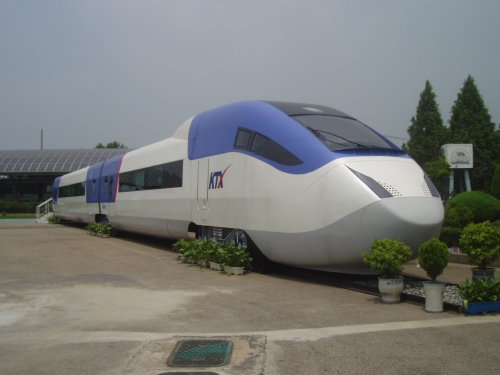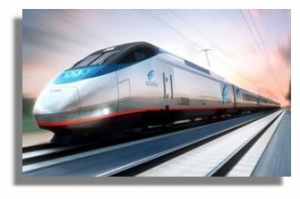Paik Nam-june once said, "The future is now." And this mantra can be applied to Korea's very fast changing society, combined with its high level of well-educated workers. These workers constitute a formidable brain trust for future research and development, which will ensure the railways continue to face a bright future.
Korea continues to ride the bullet of success even after winning the nuclear reactor deal in the United Arab Emirates late last year. Thus, Korea is about to surprise the world yet again with its bullet-train that is developed by independent technologies.

Building the foundation
2009 was a hallmark year because it was the 110th anniversary of building the foundation of what would become a vital tool for the nation's railway system. Over a century later, Korea has grown into a global leader in the railway industry. On top of that, Korea is one of an elite few countries in the world that has the know-how to build and operate a 350 kilometre per hour high-speed train, also known as KTX-II.
This is why a group of Korean companies have jumped into an international race to win a US$20 billion bullet-train project in Brazil. Moreover, industry analysts are stressing the geographical similarity between the Seoul to Busan route with the planned Rio de Janeiro to San Paulo line, as well as the successful operation of KTX-II.
The development of the KTX-II is considerably significant since it is mostly produced with local technologies. The vice president of Hyundai Rotem stated, "About 87 percent of the KTX-II is produced from local technologies. We are planning to make it 95 percent by the year 2015." The KTX-II features improved energy efficiency while providing more comfort and convenience to passengers with less noise. KTX has dramatically changed the face of railways, improved the competitiveness of the railroad industry, and has absorbed the demands for road and air travel. On top of that the KTX has touched and changed people's lives by reducing travel time and has brought about several social and cultural changes.
Therefore, the rail service has come a long way since its humble beginnings and today, KTX stands for fast, safe, convenient and environmentally friendly. The bullet-train is a product of the latest technology and will secure its position as the newest and most preferred method of transportation for years to come. A report by Samsung Research and Institute stated that, "Korea, the world's top IT powerhouse, has well applied its IT technologies to train operation and this makes the country more competitive than other candidates."
Building the link

With Brazil's lush Amazon rainforest to its thriving cities, it's a country teeming with life. Brazil is the largest country in South America, fifth largest country in the world and the size can be compared to the continental U.S. The South American country is part of BRIC (Brazil, Russia, India and China), which means that it is a fast-growing developing economy with vast potential.
Building the link between Korea and Brazil is already underway. First, the newly established "Korea Town" in Brazil's biggest city Sao Paulo will help attract tourists from around the world and showcase the Korean culture in Brazil. Second, is the long-term strategy for Brazil's cooperation with Korea in science, technology and innovation. Thus, by winning this blockbuster deal it will surely intertwine these two nations for future dynamics in science and technology.
This landmark deal is aimed at constructing a 510 kilometre high-speed railway that connects Sao Paulo with Rio de Janeiro, including stops at international airports. Once completed, the new rail line will allow the South American country to operate high-speed trains at speeds at 350 kilometers per hour.
The new bullet-train would cover the 400 kilometre trip between Rio de Janeiro and Sao Paulo in an hour and a half at a cost of about US$60 per way. In comparison, a flight between the two cities takes less time, roughly 45 minutes, but costs about US$100 per ticket. Furthermore, at peak hours, the demand is so high that air shuttles take off every five to ten minutes.
Currently there are seven consortiums taking part for the bid, which include Korea, China, Japan, Italy, Germany, Spain and France. Thus, the contract is to be scheduled to be awarded in May 2010.
The future is now and unlike the first-generation KTX, KTX-II is developed by Korea's own technology, which is garnering much international praise from countries including Brazil, Russia and Turkey. Thus, the KTX-II will ensure Korea is the heartland for high-speed trains and serve to bridge ahead into overseas high-speed markets.


